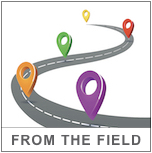 Innovation is a common topic in The Company Dime’s From The Field series. While some welcome new ideas more than others, anyone can be confused by their influence on the intricate business travel technology ecosystem. Mary Ellen George of Tramada Systems argues that things are getting more complicated and offers some guidance — handy checklist included.
Innovation is a common topic in The Company Dime’s From The Field series. While some welcome new ideas more than others, anyone can be confused by their influence on the intricate business travel technology ecosystem. Mary Ellen George of Tramada Systems argues that things are getting more complicated and offers some guidance — handy checklist included.
With so many new entrants in the market, the travel technology space has become overwhelming for buyers and suppliers alike.
Don’t get me wrong, the innovation we’ve seen in travel technology over the past two to three years has been extremely exciting. New entrants in the North American market have improved travel program operations and eased the daily challenges of fulfillment.
However, “app fatigue” amongst travelers is commonplace. Seemingly every day new and established players offer some kind of chatbot, predictive analytics tool or another piece of technology meant to optimize the travel experience.
All this innovation makes for an undeniably cumbersome landscape with complex layers of add-ons for travel operations. In this environment, what is the best way for travel managers to utilize technology to drive program improvement?
Defining The Challenge
Travel managers must decide which technologies best fit their programs. They need to determine if new providers are here to stay or a passing fad. At the same time, suppliers – particularly travel management companies – are challenged with integrating these new solutions into a complex string of layered-up legacy systems and processes.
In both cases, what questions should you be asking? How can you best use these new products and services to support objectives?
Staying True To Your Goals
Although the “latest and greatest” can be appealing, especially among travelers and/or clients clamoring for adoption, make sure any new technology serves the overall goals of your business.

As a travel manager, are you more focused on driving cost savings, traveler satisfaction or a balance of both?
As a TMC, does the technology serve your overall priorities or are clients pressuring you? Can the technology help you achieve efficiencies in delivering on the service and traveler experience you’ve promised?
Stick to your main mission and evaluate whether the provider under consideration helps achieve that goal. Will your travel data management platform not only support this new app but also stand the test of time?
Setting A Firm Foundation
As either a travel manager or supplier, what requirements do you expect from the technology you bring into the fold? Focus on the foundation and ensure a solid vetting process is in place before making a commitment. (See checklist.)
Once you determine preferred technology suppliers, make sure your back office can deliver. The front end is sexy, but back-end harmonization is critical. Keep in mind that by using cloud solutions we can now make all the cool stuff come together.
Let’s take one of the largest retailers in the world as an example. Amazon can have the best user experience and interface around, but if the package doesn’t get delivered, the positive customer experience realized on the site is completely negated. That’s wholly dependent on the delivery provider, not the retailer. Picking the right partner is therefore critical. It may be one of the reasons Amazon is rolling out its own delivery service.
In our industry, one size certainly does not fit all, so it’s critical to have a foundation that enables best-of-breed partner integration. This requires a modern, flexible and scalable technology platform that creates an IT environment where you can partner with whatever solution makes sense for your business.
Vetting the right travel technology partner may present some challenges. If the provider is aligned appropriately with your overall objectives and its deployment within your tech stack creates new value, the ROI benefits can be incomparable. This is a pivotal time in our industry, and I look forward to seeing strides from calculated implementation of new technologies on both the buyer and supplier sides.
Related
• Simon Barker On Whether The Corporate World Is Ready For New Technology
• Yael Klein On Failure
• Mat Orrego On Approaching And Solving Problems In The Travel Industry, Part 1
• Arlene Coyle On Who Owns Business Travel
• Kurt Knackstedt On Fintech And ‘Distributech’